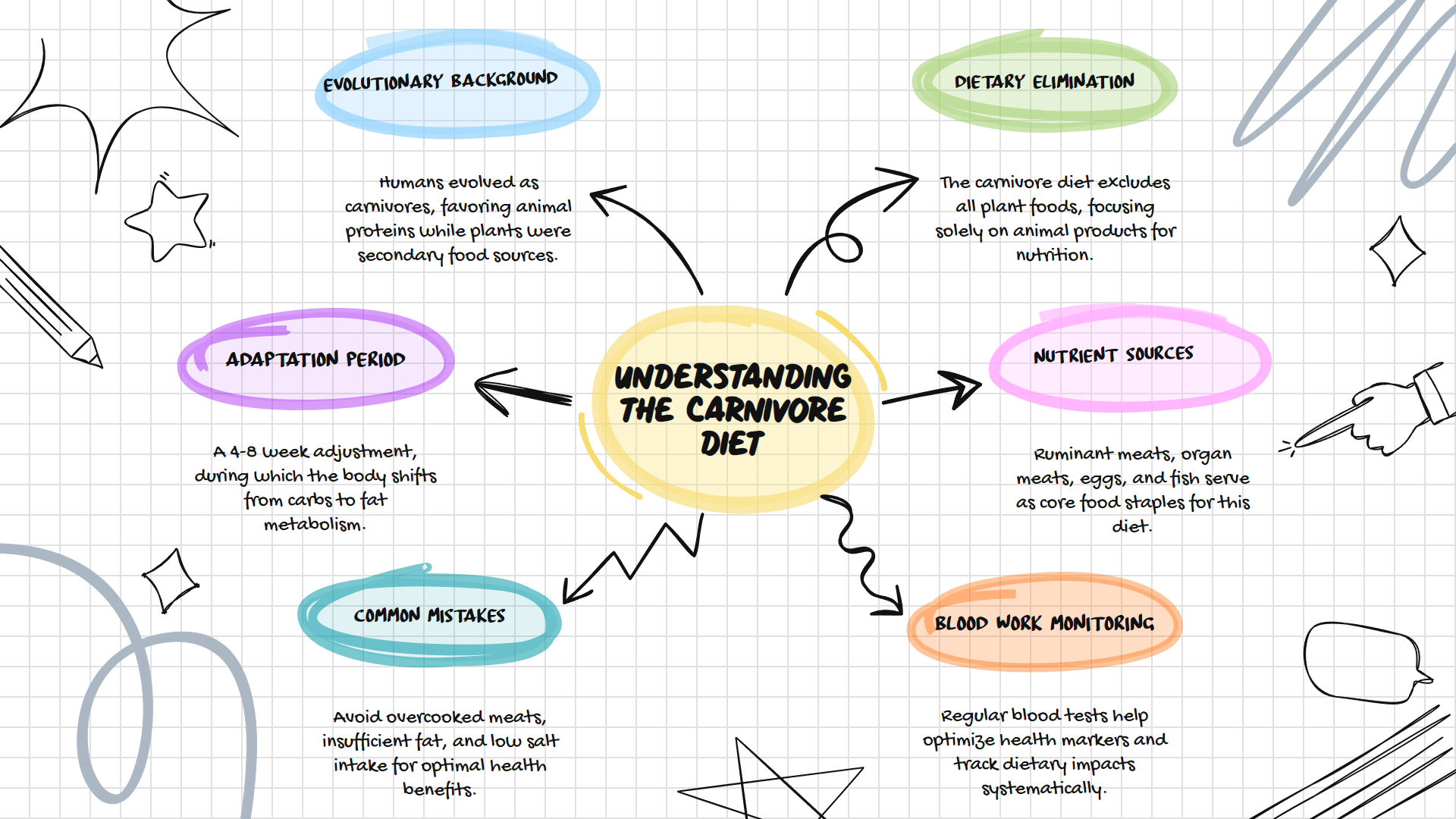
Carnivore Diet Decoded For Maximum Results
Carnivore Diet Decoded For Maximum Results
Meat builds humans. Animal protein shapes our biology in ways nutrition science is only beginning to understand. The carnivore approach isn't just another dietary experiment but potentially a return to our species' original blueprint.
The carnivore diet has emerged from relative obscurity to become one of modern health discourse's most polarizing nutritional protocols. At its core, this approach eliminates all plant foods, focusing exclusively on animal products. While conventional wisdom recoils at abandoning fruits and vegetables, a growing body of clinical evidence and thousands of anecdotal reports suggest this approach may benefit specific individuals.
The Evolutionary and Scientific Case
Humans evolved as apex predators. Anthropological evidence points to our ancestors prioritizing large game animals, with plant foods as fallback options during scarcity. Our digestive systems reflect this carnivorous heritage through hydrochloric acid concentrations that rival dedicated carnivores, bile salt compositions optimized for fat digestion, and relatively short colons compared to herbivorous primates.
Recent clinical observations challenge conventional nutritional dogma. Numerous case studies document the resolution of autoimmune conditions, psychiatric disorders, and metabolic dysfunction when patients eliminate plant compounds. The mechanisms likely involve removing plant antinutrients and defense chemicals that can trigger immune responses in susceptible individuals.
The carnivore diet eliminates lectins, oxalates, phytates, and thousands of other plant defense compounds that can interfere with human digestion and cellular function. For those with compromised gut barriers or genetic susceptibilities, these compounds may contribute to systemic inflammation and autoimmunity.
Implementation Fundamentals
Starting a carnivore protocol requires methodical planning. The transition period typically spans 4-8 weeks as the body adapts to fat metabolism and the microbiome shifts. During this adaptation phase, many experience temporary symptoms collectively known as "keto flu" or "carnivore adaptation," including fatigue, headaches, and digestive adjustments.
Food selection forms the foundation of success. Ruminant meats (beef, lamb, bison) provide optimal nutrient profiles with higher fat content and superior amino acid compositions. Organ meats deliver concentrated micronutrients, particularly liver, which contains more bioavailable vitamins than plant food. Eggs, fish, and dairy (for those who tolerate it) round out the protocol.
Common implementation mistakes include insufficient fat consumption, inadequate salt intake, and overcooking meats. When carbohydrates are eliminated, the body requires substantial fat for energy. Electrolyte management becomes crucial as insulin levels drop, necessitating deliberate salt consumption. Consuming some meats rare or medium-rare preserves heat-sensitive nutrients.
Optimization Strategies
Blood work provides the objective feedback necessary for optimization. Tracking markers like fasting glucose, insulin, inflammatory markers (hsCRP, ferritin), and lipid particles offers insights beyond standard panels. Many practitioners find that conventional reference ranges become less relevant as metabolism shifts toward fat utilization.
Personalization proves essential for long-term sustainability. Some thrive on a strict ruminant-only approach, while others benefit from including seafood, eggs, or limited dairy. The ideal protein-to-fat ratio varies based on activity levels, metabolic health, and genetic factors. Experimentation with meal timing and frequency often yields surprising results.
Strategic reintroduction testing can identify specific plant foods an individual may tolerate after healing. This process involves systematically adding single foods while monitoring symptoms and biomarkers. Many discover they tolerate certain plant foods while others consistently trigger symptoms.
Navigating Challenges
Social situations present practical hurdles for carnivore adherents. Developing communication strategies for restaurants, family gatherings, and work functions becomes essential. Rather than framing dietary choices as restrictive, positioning them as health interventions shifts conversations toward understanding rather than judgment.
Cost considerations require strategic approaches. Direct relationships with local farmers, bulk purchasing, utilizing cheaper cuts, and incorporating nutrient-dense but affordable organs can make this approach economically sustainable. The potential reduction in healthcare costs and productivity gains may offset food expenses for many.
Sustainability concerns deserve thoughtful consideration. Regenerative agriculture practices that sequester carbon and rebuild topsoil offer environmentally sound methods for producing animal foods. The environmental impact of industrialized monocrop agriculture for plant foods often goes unexamined in dietary discussions.
The Path Forward
The carnivore approach represents a radical departure from conventional nutrition advice, yet its clinical results warrant serious consideration. For those struggling with autoimmunity, metabolic disorders, or psychiatric conditions that haven't responded to traditional treatments, this protocol offers a potential intervention pathway with minimal risk when properly implemented.
Nutrition science continues evolving beyond population-level recommendations toward personalized approaches based on individual responses. The carnivore diet exemplifies this paradigm shift, recognizing that genetic, microbiome, and environmental factors create unique nutritional needs that standardized guidelines cannot address.
The most valuable perspective combines scientific rigor with pragmatic experimentation. Blood work, symptom tracking, and objective measurements provide the feedback necessary to determine if this approach serves your specific biology. The ultimate measure remains simple: improved health outcomes and enhanced quality of life.
